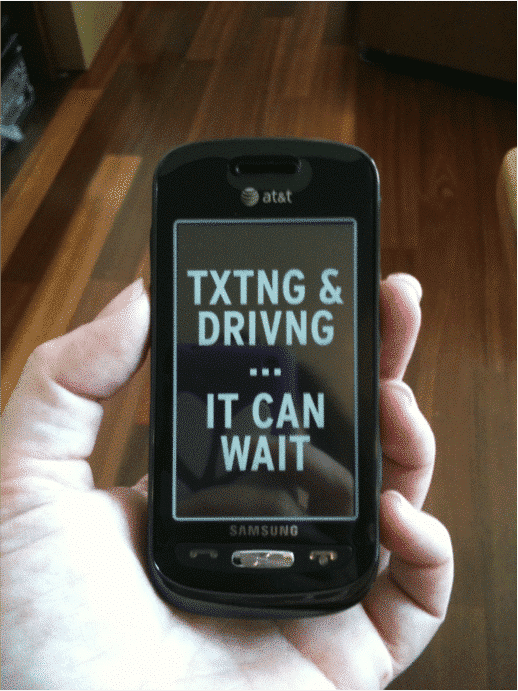
Are you so attached to your smartphone that you can’t ignore a notification while driving? As hard as it is for parents, imagine how impossible it is for your teen! Their virtual identities are even more developed than ours. Teens need their phones to communicate with friends, look up activities, watch on-demand entertainment, and complete school assignments. Teens are more cyborg (part human, part machine) than parents. They are more dependent on screens and more practiced. With less impulse control, they are also at higher risk for distracted driving. One of my favorite things about being Global Ambassador for TeenSafe was helping parents can better help teens concentrate on the road rather than their screens. Although there are phone options and apps that help, nothing works as well as starting healthy habits before they get their driver’s licenses. Today’s GKIS article may help save your life or the life of your child!
Distracted Driving
Motor vehicle accidents are the leading cause of death for children. Texting while driving is the cause of 25% of all driving accidents.[1,2] Texting while driving has become a 6x bigger hazard than drinking while driving. Ninety-five percent of drivers disapprove of distracted driving, yet 71% admit to doing it.[3] In the five seconds it takes to respond to a text while driving 55 mph, one travels the entire length of a football field.[4] Not only does texting take your eyes off the road, but it also takes your hands off the wheel and your concentration off safe driving.
Teenagers are the guiltiest of distracted driving. A 2012 AAA Foundation in-car study found that teens are distracted for up to one-fourth of their time behind the wheel. Screen activities like texting, navigating, taking photos, checking social media, and selecting and downloading music are common distractors.
The compelling urge to multitask combined with the dire need for more hours in the day compulsively condition us to be on our screens 24/7. There has also been a large increase in smartphone apps available for download. Not only are teens texting, but many are also using social media and gaming apps like TikTok, Instagram, Facebook, Twitter, and Pokémon Go and even taking “selfies” with apps like Snapchat while driving.
Monkey See, Monkey Do
Every parent has told their teen not to use their phone and drive, yet, “according to 77% of teens, adults tell kids not to text while driving—while texting themselves while driving “all the time.”[5] They notice, and they copy what we do. Why should our teens listen to us when we remind them not to use their phones and drive if we don’t take our own advice?
Peer Influence
To make matters more difficult, our driving habits aren’t the only influence on our teens. 75% say texting while driving is common among their friends.[6]
Start the Conversation
The National Safety Council reports that smartphone use while driving leads to 1.6 million motor vehicle accidents each year. That translates to nearly 390,000 injuries and 15,341 drivers involved in fatal crashes. One out of every four car accidents in the United States are caused by texting while driving.[7]
If your teen is driving, talk with them about specific ways to reduce their distractions while on the road. Being a positive role model for safe driving and promoting open communication will not only benefit your teen but hopefully, your teen will follow your lead and become a role model for their friends. In our crazy busy lives, we all could use some reminders. Even teens agree; “62% of teens feel that getting reminders from their parents not to text and drive would be effective in getting them or their friends to stop texting and driving.”[6]

GKIS Tips for Distraction-Free Driving
- Because teen drivers are inexperienced and tend to overlook risk, draw up a safe-driving contract with the help of your free GetKidsInternetSafe Connected Family Screen Agreement so they are aware of distracted driving risks and agree to safe driving practices. Make sure they recognize that texting while driving is illegal and may result in fines, license restrictions, a rise in auto insurance rates, and even prison time. Critical safety measures include setting a good example, limiting the number of passengers, investing in a safe-driving course, and using a parent-controlled tech tool like a pause button that freezes smartphone capacity.
- Enable “do not disturb while driving” options on your smartphone.
- Stash your phone away when driving. Even when disabled, it’s still too tempting to grab it for nav or music.
- If you’re the kind of person that can’t stand radio commercials, create a music playlist on your phone so you don’t have to go searching through your phone for a song while you drive.
- If you need to take an important phone call, pull over to the side of the road.
- Use Bluetooth. While it is still mentally distracting to be talking on the phone if you can’t pull over, Bluetooth keeps your hands on the wheel and your eyes on the road.
- Plan ahead and look up directions before starting the car.
- While there are days when running late is unavoidable, do your best to be ready before you get in the car. That means makeup, hair, and breakfast are already taken care of rather than dining while dashing.
- Finally, regularly remind your teens that using their smartphones while driving is not worth losing their life. Remind them that driving is a huge responsibility, and their car is a 2-ton weapon.

I’m the mom psychologist who will help you GetKidsInternetSafe.
Onward to More Awesome Parenting,
Tracy S. Bennett, Ph.D.
Mom, Clinical Psychologist, CSUCI Adjunct Faculty
GetKidsInternetSafe.com

Photo Credits
Texting While Driving
Girl in Car
Driving
Works Cited
[1] https://www.cdc.gov/safechild/child_injury_data.html
[2] https://www.nhtsa.gov/risky-driving/distracted-driving
[3] AT&T, https://www.itcanwait.com/pledge
[4] DMV. https://www.dmv.org/distracted-driving/texting-and-driving.php
[5] Atchley, P., Atwood, S., Boulton, A. (2011). The Choice to Text and Drive In Young Drivers: Behavior May Shape Attitude. Accident Analysis & Prevention, Vol 43. Retrieved from
[6] U.S. Newswire [Washington] (2012). 43% of Teens Say They Text & Drive; 77% Say Adults Warn Against Risks, but Text & Drive ‘All The Time’: With Prom, Graduation, Summer, May Starts ‘100 Deadliest Days’ On the Road for Teen Drivers; AT&T Kicks Off Nationwide Car Simulator Tour
[7] https://www.aaafoundation.org/sites/default/files/research_reports/DistractedDrivingAmongNewlyLicensedTeenDrivers.pdf
Don't worry, we will never spam you.









